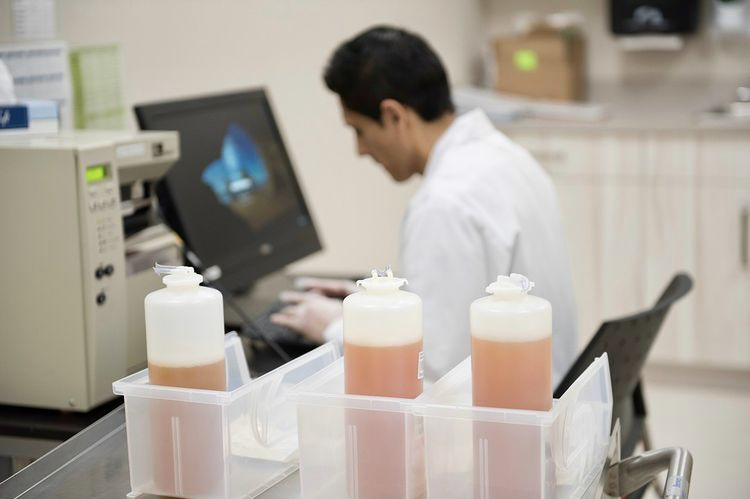An Overview of Plasma Proteins and the Diseases They Treat
mars 26, 2020

For several decades, donated plasma has been used to treat a whole host of conditions, and scientists continue to discover new uses for this yellow liquid component of blood every day. In fact, the US Food and Drug Administration recently permitted doctors to treat some COVID-19 patients with convalescent plasma from individuals who have already recovered from the virus. The antibodies in convalescent plasma have proven to be effective at treating other strains of coronaviruses in the past, and health experts are hoping that it will also be a viable treatment option for COVID-19.
There are also many established treatments that have been created using donated plasma, which is packed with several different types of life-saving proteins. These proteins each have their own unique healing properties, and some have proven to be more effective at treating specific diseases than others. Read on to learn more about the kinds of proteins that are found in human plasma and how they are used as medical interventions to help treat and cure various conditions.
Plasma Protein #1: Albumin
Albumin is a protein made by the liver and circulated throughout the body via the bloodstream. It is the most abundant protein found in plasma, and it plays a critical role in many bodily functions, including transporting substances, maintaining appropriate volume inside blood vessels, and wound healing. This water-soluble protein has been found to be an effective treatment for the following:
- Adult Respiratory Distress Syndrome
- Cardiopulmonary Bypass Surgery
- Shocks
- Burns
Plasma Protein #2: Immunoglobulins
Immunoglobulins are glycoprotein molecules that are produced by antibodies in response to an immunogen. They are one of the most abundant proteins in blood plasma and can be turned into intravenous immunoglobulin (IVIg) treatments that help individuals with weakened immune systems fight off infections. The conditions immunoglobulins can treat include:
- Chronic Inflammatory Demyelinating Polyneuropathy
- Idiopathic Thrombocytopenic Purpura
- Primary Immunodeficiency Diseases
- Autoimmune Diseases
Plasma Protein #3: Alpha-1 Antitrypsin
Alpha-1 antitrypsin, or AAT, is a protein produced by the liver. AAT protects the lungs from inflammation that can be caused by infection or inhaled irritants. This protein is used as a treatment for Alpha-1 Antitrypsin Deficiency, a genetic condition that can result in serious lung and/or liver disease.
Plasma Protein #4: Coagulation Factors
Coagulation factors are proteins in the blood that are essential for proper blood clot formation. Factor VII and factor IX are coagulation factors found in plasma that can be used to treat various diseases. Both of these coagulation factors are composed of cells made in the liver. They set off a chain of chemical reactions that help form blood clots that protect the body when an injury occurs. The conditions that can be treated using coagulation factors found in plasma are as follows:
- Hemophilia A & B
- von Willebrand Disease
- Bleeding Disorders
Plasma proteins play an essential role in the wellbeing of individuals living with rare and chronic conditions, and no matter what is going on in the world, the need for plasma never goes away. Book your next appointment at a Canadian Plasma Resources centre near you to help provide patients with the life-saving treatments they rely on.









